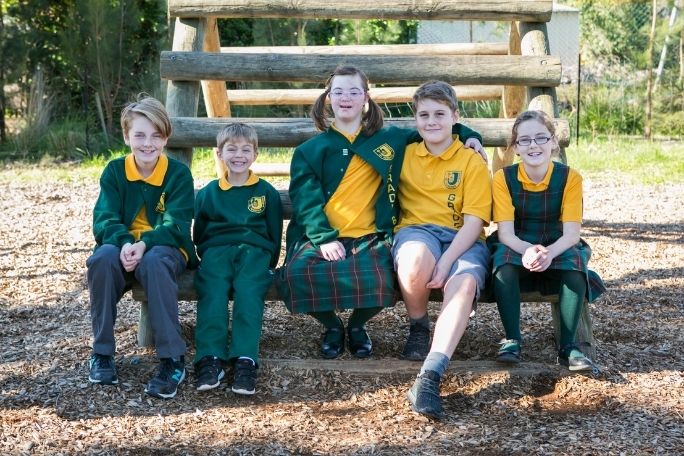Lesson summary
In this lesson, students will explore what makes them unique. In a class circle, they will explore differences in appearance, ability, interests, hobbies and possessions, and observe how no two individuals are the same. They will then create a self-portrait to represent themself. The lesson will conclude with students reflecting on the importance of remembering that we are all different.
Learning intentions:
Students will...
- demonstrate pride in themselves as individuals
Success criteria:
Students can...
- identify features of themselves and their lives
- create a representation of themself
- share features of themselves and their lives confidently with others in their community
Lesson guides and printables
Curriculum links
Select your curriculum from the options below.
Lesson details
Curriculum mapping
Australian curriculum content descriptions:
Year 1 and 2 Health and Physical Education:
- Describe their own strengths and achievements and those of others, and identify how these contribute to personal identities (ACPPS015)
- Describe ways to include others to make them feel they belong (ACPPS019)
- Explore actions that help make the classroom a healthy, safe and active place (ACPPS022)
- Recognise similarities and differences in individuals and groups, and explore how these are celebrated and respected (ACPPS024)
- Perform fundamental movement skills in a variety of movement sequences and situations (ACPMP025)
- Create and participate in games with and without equipment (ACPMP027)
- Use strategies to work in group situations when participating in physical activities (ACPMP030)
- Identify rules and fair play when participating in physical activities (ACPMP032)
Year 1 English:
- Engage in conversations and discussions, using active listening behaviours, showing interest, and contributing ideas, information and questions (ACELY1656)
- Use interaction skills including turn-taking, recognising the contributions of others, speaking clearly and using appropriate volume and pace (ACELY1788)
Year 2 English:
- Listen for specific purposes and information, including instructions, and extend students’ own and others’ ideas in discussions (ACELY1666)
- Use interaction skills including initiating topics, making positive statements and voicing disagreement in an appropriate manner, speaking clearly and varying tone, volume and pace appropriately (ACELY1789)
Syllabus outcomes: EN1-1A, GDS1.9, COS1.1, SLS1.13, MOS1.4, GSS1.8, INS1.3
General capabilities: Literacy, Personal and Social Capability
Relevant parts of Year 1 and 2 Health and Physical Development Achievement Standards: By the end of Year 2, students recognise how strengths and achievements contribute to identities. Students demonstrate positive ways to interact with others. They select and apply strategies to keep themselves healthy and safe and are able to ask for help with tasks or problems. They demonstrate fundamental movement skills in a variety of movement sequences and situations and test alternatives to solve movement challenges. They perform movement sequences that incorporate the elements of movement.
Relevant parts of Year 1 English Achievement Standards: By the end of Year 1, students understand the different purposes of texts. They listen to others when taking part in conversations, using appropriate language features and interaction skills. They interact in pair, group and class discussions, taking turns when responding.
Relevant parts of Year 2 English Achievement Standards: By the end of Year 2, students understand how similar texts share characteristics by identifying text structures and language features used to describe characters and events, or to communicate factual information. They listen for particular purposes. When discussing their ideas and experiences, students use everyday language features and topic-specific vocabulary.
This lesson is part of the wider unit of work Including Everyone
Time required: 60 mins
Level of teacher scaffolding: Medium – some children may require support to cut the more precise areas of their work before mounting it
Resources required
- Student silhouettes (one per student), create your own or use one of these: Silhouette Templates
- I Am Me Activity Example
- Ball of wool or string
- Coloured paper
- Task example
- 3-5 tablets for image searches to share (optional)
- Circle Time Norms (optional)
Skills
This lesson is designed to build students’ competencies in the following skills:
- Communication
- Community engagement
- Collaboration
- Creativity
- Empathy
- Social skills
Additional info
These lessons have been developed in partnership with Down Syndrome Australia


Welcome back!
Don't have an account yet?
Log in with:
Create your free Cool.org account.
Many of our resources are free, with an option to upgrade to Cool+ for premium content.
Already have an account?
Sign up with:
By signing up you accept Cool.org's Terms and Conditions(Opens in new tab) and Privacy Policy(Opens in new tab).